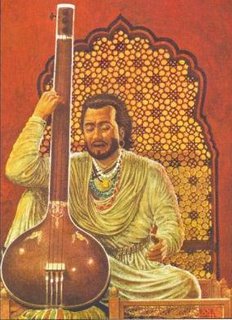
The realm of Vishnu and Brahma on Ananthasayanam:
Life as we see it is a time period we exist in current consciousness and depart without knowledge of the next world. Perfect life is that which gives us a far more conscious mind, which knows exactly what happens during life and during death.
What is that perfect life? The great Chola architects have tried to depict this very concept at the temple of Chidambaram, which hosts Nataraja in Ananda Tandava.
The temple itself is a breathing reality of human life.
Our body is not just about eating, breathing and being active. There are 72000 nadis unheard of which are the integral support system of our body embedded well within our nerves system. Once inactive, life ceases to exist – we are called dead. Waking these nadis up is the stage of reaching Nadi Gantham, a higher level of purification of the body, where the 72000 dormant nadis get active transforming a person’s life into happiness, success and peace at the same time.
Where does all this stem from? Its peculiar that one of the most important Gods in the Trinity is hardly heard of these days. Brahma, the main God behind our lives assigns the bija mantra that we shall live with, the type of life we shall lead and the kind of death we would be subjected to. The awakening of the Nadi Gantham is a long process, which is attained by severe penance or can be attained sooner depending on “Purva punya stanam” meaning your deeds in your last birth that grant you the opportunity in this birth.
What happens during the first few months of birth?
The life support of the umbilical chord is cut off once the child is born. This is carefully covered to keep out any infection. During this time the child knows nothing about the world it lives in. If the soft bone of the skull closes sooner than expected at the region of the Sahasraha chakra, it means the child is not going to live long. For the next 90 days the operating system is head quartered at the Nabhi Kamalam, or the navel area. This is when the child suddenly starts to cry due to acute pain in the stomach, since it begins to swell up. After this the Nabhi Kamalam turns active, the 72000 nadis begin to function, the skull closes slowly, the bija mantra gets formed (Brahma’s talai ezhutu) and the child wakes up to its known world and recognizes Ma. During this time the only external supply is mother’s milk. These are the crucial days that decide whether the child is going to survive, and whether the child is going to do well in its spiritual life or not.
What happens during death?
Death comes in three ways. Kapala moksha is when the life energy or prana leaves the body through the small crack in the Sahasraha chakra in the head. This is what is called salvation. Its happens to select few who do not have rebirth and are lucky enough to get assisted during the moments of death. During this time the only intake is milk and tulsi water.
Most people go through death where the prana leaves the body through the Nabhi Kamalam. The navel region is that part which is the entry as well as the exit point for all who live and die in this life. The Nabhi Kamalam works as the exit door for the soul leaving the body.
The worst form of death happens to those who have cheated others, have been corrupt and have sinned through their lives. This form of death is painful to say the least. In this case, the prana leaves the body through the genitals, through the Yoni for women and through the male organ for men. This can be a saving grace if the person stays unconscious during the moment of death. But should he/she be conscious it’s the experience of suffering of the worst kind. This causes excess urination and gasping for breath at the same time, can be a deadly experience while exiting the world.
Nabhi Kamalam: Where Brahma rises out of Vishnu's navel
Of greater interest to us is the concept of the Nabhi Kamalam and its connection with our lives today. The Nabhi Kamalam is the zone that activates the Nadi Gantham or nerve centers of the body. This has been beautifully depicted in mythology where Brahma the Creator is seen seated on a lotus that rises out of Lord Vishnu's navel, who lies down on Ananthasayanam in the cosmic ocean. Truly a beautiful depiction of a concept so close to us, of something so real, and of which we are least aware of!
In conscious living the pranavom mantra OM is brought out from the “pit of the stomach” or the Nabhi Kamalam as we breathe it out as OOOMMM, the very basic form of life energy, which we experience in a glimpse through our lives. Brahma is not just a Creator, he is our life giver, he decides our future, he decides fate, and he gives life for us to live it.
Hinduism is a "science" of a higher kind, its not fiction!



















